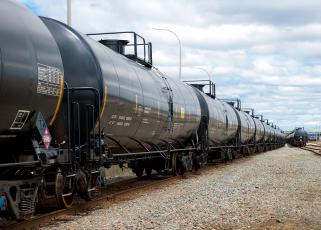This op-ed below was originally published in Morning Consult on November 5, 2020.
American manufacturing has seen its fair share of challenges in what has been a transformational year economically, thanks in part to a protracted trade war and the global pandemic. These challenges have had a profound impact on U.S. energy and chemical producers.
Looking beyond the headlines there is another significant challenge impacting the energy and manufacturing sectors that has gone largely unnoticed – the lack of competitive and reliable freight rail service.
While these challenges might make the future seem dire, there is a solution at hand. It rests with landmark legislation that helped save the nation’s freight rail system and is celebrating its 40th anniversary this year – the Staggers Rail Act of 1980.
The law eased regulatory burdens on the existing rail system, fostering a more efficient rail market that would benefit rail shippers and consumers. The authors of Staggers understood that the key factor underpinning a healthy rail network like any network is competition. In fact, the act’s overarching policy is to allow competition to drive rail markets “to the maximum extent possible.”
Rail rates certainly fell in the years immediately after the Staggers Act while the overall health of the U.S. rail system improved, but this careful balance reached a tipping point in the late 1990s. Dramatic operational changes and consolidation of the freight rail industry over the past several decades have helped to bolster the financial health of the railroads, which is undeniably a good thing.
At the same time, those changes have also led to less competition between railroads and less desirable outcomes, such as diminished service and higher costs for U.S. producers. Since 2000, carload volumes have remained flat while inflation adjusted rail rates spiked by 30 percent and a key measure of profit for the railroads grew by more than 180 percent.
Four decades later, the Staggers Act still may provide a path for moving forward on reforms that would once again benefit both railroads and shippers. One market-based solution spelled out in the act would help reduce the need for government intervention for addressing rates. It’s called reciprocal switching and it simply allows a shipper that is served by a single major railroad to request to have its freight “switched” to another railroad at a nearby interchange. Adopting this reform would allow rail customers to choose a rail carrier that provides the best service and would allow the free enterprise system to drive innovation and cost-savings within the rail industry.
And where competitive options are not possible, there are other solutions that could help by streamlining how the federal government resolves freight rail issues. The Surface Transportation Board, which has broad economic oversight of the nation’s freight railroads, recently issued a proposal for Final Offer Rate Review. It’s modeled after successful arbitration programs and would help the Board resolve rate disputes more quickly.
The STB should also consider adopting another straightforward solution called rate benchmarking, which would no longer require shippers, railroads and the federal government to sink millions of dollars into rate cases. Rate benchmarking is widely employed by businesses and government and was endorsed in a 2015 report by the National Research Council’s Transportation Research Board as a better way for the STB to identify unreasonable rates.
Just as it was in 1980, it’s in the best interest of all concerned – the railroads, rail shippers and U.S. consumers – to make sure that nation’s freight rail policies keep up with the changes in our economy. Modernizing the STB and reforming its regulatory policies will help ensure that this critical mode of transportation will remain viable well into the future and that U.S. producers can count on reliable and affordable freight rail service.


